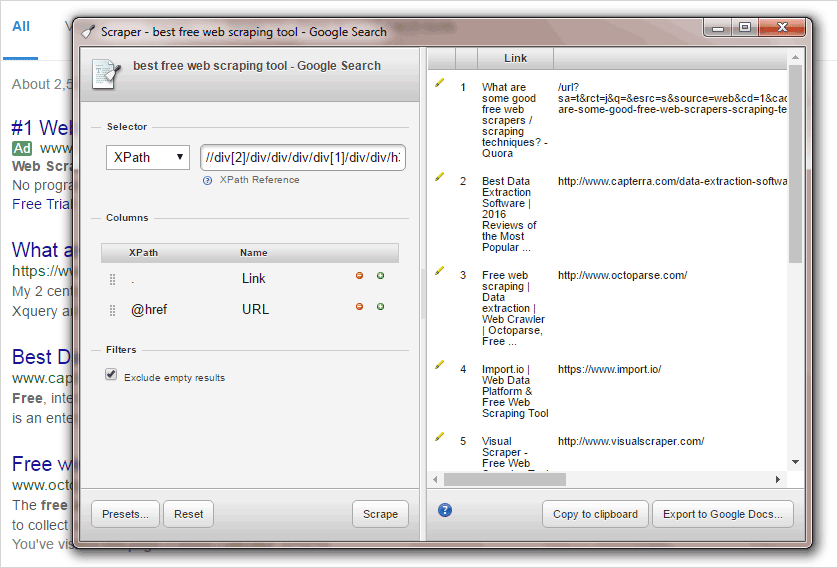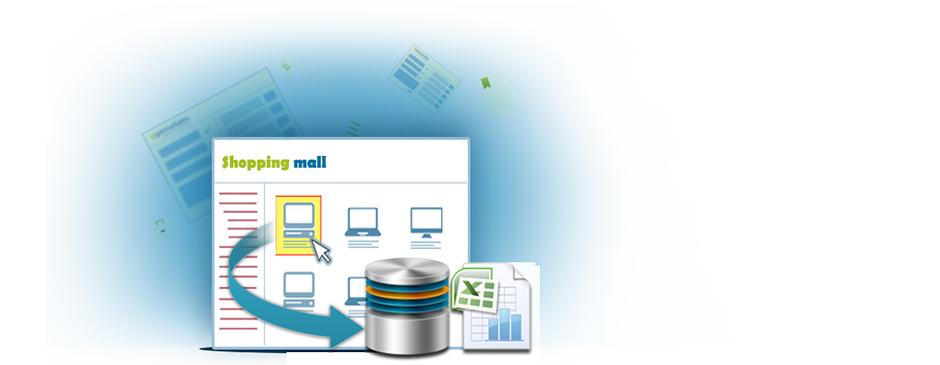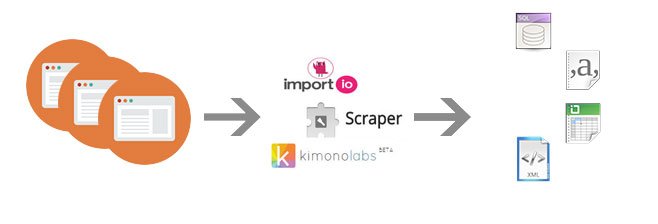


Scrapy is a scraping framework supported by an active community with which you can build your own scraping tool. Unfortunately, the project does not have robust documentation at this time Scrapy
#Easy webscraper how to
For more on how to use it, check out the example source file example.py on the project's GitHub page. MechanicalSoup is licensed under an MIT license. If your crawling needs are fairly simple, but require you to check a few boxes or enter some text and you don't want to build your own crawler for this task, it's a good option to consider. MechanicalSoup is a crawling library built around the hugely-popular and incredibly versatile HTML parsing library Beautiful Soup. Licensed under the Apache 2 license, pyspyder is still being actively developed on GitHub.

#Easy webscraper code
Pyspyder's basic usage is well documented including sample code snippets, and you can check out an online demo to get a sense of the user interface. Pyspider supports both Python 2 and 3, and for faster crawling, you can use it in a distributed format with multiple crawlers going at once. It's an extensible option, with multiple backend databases and message queues supported, and several handy features baked in, from prioritization to the ability to retry failed pages, crawling pages by age, and others. Let's kick things off with pyspider, a web-crawler with a web-based user interface that makes it easy to keep track of multiple crawls. With that caution stated, here are some great Python tools for crawling and scraping the web, and parsing out the data you need. And don't hit a website so frequently that the actual human visitors have trouble accessing the content. Be aware of copyrights and licensing, and how each might apply to whatever you have scraped. Don't crawl websites just to duplicate them and present someone else's work as your own (without permission, of course). In the context of scraping, this can mean a lot of things. How you do this is up to you, but I've found the Python community to be a great provider of tools, frameworks, and documentation for grabbing data off of websites.īefore we jump in, just a quick request: think before you do, and be nice. Sooner or later, you're going to find a need to do some crawling and scraping to get the data you need, and almost certainly you're going to need to do a little coding to get it done right. Crawling, scraping, processing, and cleaning data is a necessary activity for a whole host of activities from mapping a website's structure to collecting data that's in a web-only format, or perhaps, locked away in a proprietary database. While some websites make an effort to present data in a clean, structured data format, many do not. Often, the information you need is trapped inside of a website.


 0 kommentar(er)
0 kommentar(er)
